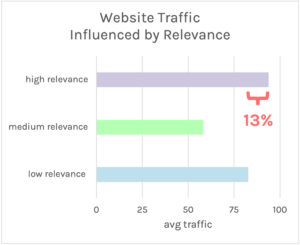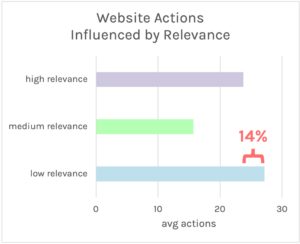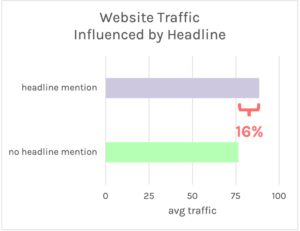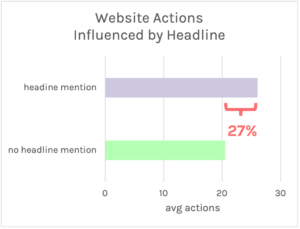How earned media drives consumer behavior: Relevance and headlines
Part 2 in a series from Onclusive based on an analysis of more than 100,000 articles.

Last week, I wrote about some unexpected insights into the relationship between publication authority (reputation and reach) and consumer behavior.
This week, there are more surprises in store for you as we continue our conversation about connecting earned media content to desired consumer actions.
What are those consumer actions?
They include website visits and activity at the top of the marketing funnel, as well new customers, sales and brand loyalists at the bottom of the marketing funnel.
And thanks to modern PR technology, it is now possible to make this connection.
During a recent quantitative analysis of global PR measurement data here at Onclusive, we sought to understand the relationship between certain characteristics of media articles –- such as publication authority, brand relevance, brand engagement and sentiment -– and PR-driven website traffic and actions.
Brand relevance would seem to be a strong predictor of consumer behavior. Or is it? Well, let’s look at the data.
Article brand relevance and consumer behavior
Brand relevance measures how much the article is “about” a particular company or brand, from a single mention to a dedicated feature.
Based on global data from over 100,000 articles, it turns out that relevance of the article towards the brand is only moderately correlated with website traffic.
Medium relevance articles drive less website traffic, compared to low relevance. And while highly relevant earned media content does result in the most website traffic (13% higher than low relevance articles), this number points to a weak relationship between relevance and traffic.
There is another surprise in the data: article brand relevance is not at all predictive of website actions, with low relevance articles driving slightly more (14%) website actions than highly relevant articles:


What does this mean? We believe that the key variable for driving desired consumer actions is the quality of the brand website itself -– certainly more so than the relevance of earned media content driving these readers to the website.
Your website is just as important for the success of your PR initiatives as it is for your marketing, talent acquisition, investor relations and other business functions.
How you can use this in your PR strategy:
- Make sure that your brand website has comprehensive, relevant and fresh content, as well as effective calls to action (CTAs).
- A/B test your landing pages, CTAs and other elements to determine which are the most successful.
- Monitor your SEO rankings over time to confirm consistent content quality of your website.
Brand headline inclusion and consumer behavior
The article headline refers to the heading at the top of an article.
So, “brand headline inclusion” means that your brand name appears in that heading and the readers can notice it right away.
Like article brand relevance, presence of the brand name in the headline is only moderately predictive of website traffic, with headline mentions resulting in 16% more traffic than no mentions.
However, a brand headline inclusion does pay off when it comes to influencing website activity. On average, headline mentions tend to drive 27% more actions than no headline mentions –- almost twice as predictive as they are of website traffic:


How you can use this in your PR strategy:
- As you know, a great headline is very important to the success of both your pitch and your first impression with the readers -– continue to create headlines that grab attention (and lend themselves to a brand mention if the reporter chooses to do so).
- Since an article’s overall relevance to your brand is only somewhat predictive of its impact on your website traffic, don’t be overly focused on “feature” stories.
- Always make sure that your content is highly relevant to your industry or category, though — you may receive as much benefit from being mentioned in this type of article as you would in a story that is mostly “about” you.
A word about our research methodology
We analyzed over 100,000 media articles published globally between January 1 and December 31, 2021, about a representative sample of business-to-consumer (B2C) and business-to-business (B2B) brands across a broad set of industries. The articles in the study included only earned media content published via digital media (excluding social media).
Zack Jenkins is US general manager for Onclusive. Want more insights? Stay tuned for the final article in the “Earned Media Attributes That Drive Consumer Behavior” 3-part series, which will reveal the connection between brand engagement, brand sentiment and consumer behavior.






